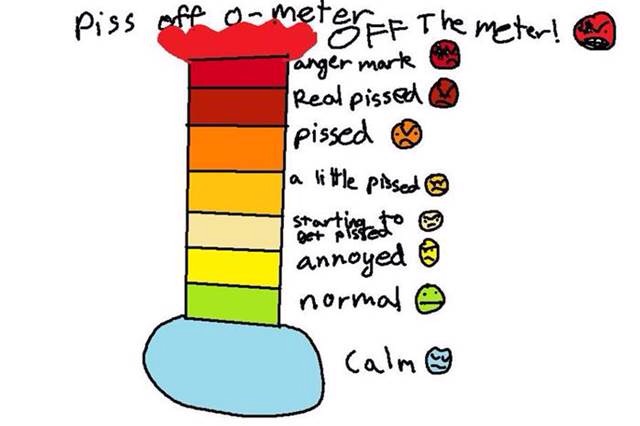The purpose of a breed-specific ordinance, nearly always targeting pit bulls, was never to “prevent all dog bites,” as the AVMA/CDC states in the 2000 study. Such laws are designed to significantly reduce the 5% (serious injuries) and eliminate the 2% (mauling and maiming injuries and deaths) inflicted by well-documented dangerous dog breeds.
Briefly, the joint study, and the last issued by the CDC on this subject, “Special Report: Breeds of Dogs Involved in Fatal Human Attacks in the United States Between 1979 and 1998,” was published in September 2000. The study was comprised of two human medical doctors and three animal “experts,” specifically, two veterinarians from the AVMA and one animal behaviorist.
The 2000 study was a culmination of three studies before it, which added 27 new deaths (from 1997 and 1998) to human fatalities examined in previous studies (from 1979 to 1996). The focal point of the 2000 study is clearly identified in its conclusions, which issued a policy statement unfavorable to breed-specific laws, despite no investigation of its effectiveness, along with using misleading vernacular about the purpose of breed-specific ordinances, which was and still is to dramatically reduce serious injuries and to eliminate mauling and maiming injuries and deaths.
Our other primary concern is the heavily weighted role of the AVMA in a United States government study examining human fatalities. Not only did the AVMA manage to ensure animal “experts” were represented on a study about health and human safety, they managed to ensure they were the majority of the study authors.
Additionally, when the study was released in 2000, it was not directly released to the American public. Instead, it was published in an AVMA journal (JAVMA), a private technical journal for veterinarians. This confused the U.S. media at that time, which initially called the study, “by the American Veterinary Medical Association.”
The AVMA even had to release a statement, along with a copyright notice to press members who requested a copy (attached). The “Special Report” to the American people could not even be freely distributed due to the AVMA copyright.
Now 14-years later, the AVMA/CDC study has been abruptly elevated into the public eye once again, this time by the White House, for political purposes or simply lack of knowledge. It is possible that the White House is even unaware that all three military divisions, the U.S. Army, U.S. Marine Corps and U.S. Air Force, have adopted uniform pet policies that ban this same handful of dog breeds from all privatized housing, domestic and abroad. Col. Richard P. Flatau Jr., commanding officer of Marine Corps Base Camp Lejeune, stated the reason why most aptly in April 2009 following Camp Lejeune’s policy shift:
“These specific breeds present an unreasonable risk to the health and
safety of our residents and are therefore prohibited.”
The CDC will tell you that they already did examine this issue. They will point you to the “policy” results of the dated 2000 study.
Yet, in the 2000 study, the CDC made the following statement, which diametrically opposes their rabies initiative of a large-scale apparatus to “prevent just one death,” as well as the very foundation of public health.
“Fatal attacks represent a small proportion of dog bite injuries to humans and, therefore, should not be the primary factor driving public policy concerning dangerous dogs. Many practical alternatives to breed-specific ordinances exist and hold promise for prevention of dog bites.”
The Consumer Product Safety Commission (CPSC) follows this same “small portion” principal for the preventable deaths of children. For instance, after 3 child deaths due to mini blind strangulations, the organization recalled 5.5 million mini blinds. 5 In 2011, after 26 child deaths in 26-years (1985 through 2011), the CPSC approved a new federal safety rule for drawstrings in children’s outerwear. The drawstrings (on sweat shirts, etc.) were getting caught on car doors and playground equipment, strangling the child. I also believe the CPSC primarily operates on “reports” sent into it. It is unknown how deeply these reports are investigated.
The point is, “child safety” and “small portions” are tantamount and set federal policy, particularly when concerning preventable child deaths. If pit bulls were a manufactured product (which they technically are through selective breeding), the CPSC would have ordered these dogs abolished decades ago.
Speaking of the CPSC, there is also the Children’s Safety Network, which operates under the U.S. Department of Health and Human Services. Notably, none of their “injury topics” cover dog bites, a leading cause of injury to children (
http://www.childrenssafetynetwork.org/injurytopic).
The CDC controls the vernacular of this conversation by obfuscating severe and catastrophic dog mauling injuries with garden variety dog “bites,” bites that inflict minor injuries that can be treated with topical antibiotics, of which many are never reported in the first place.
The breakdown is the following: 93% (4.6 million) of all dog bites per year are garden variety, and 7% (367,161) fall into the groups of our concern: serious injuries, maulings and maimings and fatalities.
This 7% group can be segmented further with 5% (357,629) involving serious injuries (emergency room visits), 2% (9,500) involving severe and disfiguring injuries (hospitalizations) — otherwise referred to in this document as “mauling and maiming injuries” — and about 32 involving death.
In 2000, when this study was published, hundreds of cities had breed-specific pit bull ordinances, the two largest and most famous being Denver and Miami. By 2000, both bans had been in place for 10-years. Neither jurisdiction was ever contacted by the AVMA/CDC to see if a reduction in pit bull mauling and maiming injuries and deaths had occurred since their bans. Today, about 23-years after having their bans in place, only 1 known fatality by pit bulls has occurred in these jurisdictions. In 2009, Denver officials stated that no pit bull mauling injuries had occurred either.
The lacking “numerator and denominator data” statement is nonsense. The 2000 study undermines the very process of researching this area by essentially stating, that since we cannot measure the “exact” number of dogs within a dog breed (as if scientific statistical estimations are non existent), we therefore cannot calculate “breed-specific bite rates.” And there is that word again, “bites.”
There is no progress as long as the CDC fails to properly acknowledge the 2% and 5% groups by obfuscating these severe injuries with garden variety dog bites. The solutions for preventing both public health problems are not the same and cannot be solved through a simple leash law, “responsible owners,” or basic dog bite safety programs. They are two separate and distinct problems and must be addressed accordingly.
Further, the “bite” obfuscation vernacular used by the CDC in the 2000 study was then disseminated and repeated ad nauseam by veterinarian groups (for years), and today we live with even greater obfuscations of the issue: “all dogs bite” and “any dog can bite” and “dog bite prevention.”
Under the influence of the AVMA, the CDC set forth policy guidelines in the 2000 study: We do not recommend breed-specific laws. What solution did they recommend, and still recommend today? A Community Approach to Dog Bite Prevention (2001), by the AVMA,15 which promotes out-of-date policies that financially serve the interest of veterinarians, reinforces biased and inaccurate AVMA talking points (“can’t identify breed,” etc.,) and further condemns breed-specific ordinances.
On the CDC’s current Dog Bites page, they point to the AVMA’s guide:
“In addition, the American Veterinary Medical Association task force has outlined recommended strategies that communities can undertake for the prevention of dog bites.”
The 18-page paper contains a “litany” of biases, inaccuracies and scare tactics; it is enough just to look at the first page: “Following a severe attack, there is usually an outcry to do something … a knee-jerk response” (breed-specific law implied) and “media-driven portrayals of a specific breed as ‘dangerous’” and “singling out 1 or 2 breeds for control can result in a false sense of accomplishment” and “dog bite statistics are not really statistics” and “small breeds also bite.”
The scare tactics are particularly evident in the paper’s flawed language regarding constitutional challenges to breed-specific ordinances. Every constitutional point stated in the AVMA guide has been nullified by appellate and federal courts, including: procedural due process substantive due process, equal protection, under inclusive, and void for vagueness. Even the United States Supreme Court weighed in on this by rejecting the appeal from the Ohio Supreme Court’s decision in City of Toledo v. Tellings, 871 N.E.2d 1152 (Ohio, August 1, 2007).
http://scholar.google.com/scholar_case…
Despite the AVMA’s “appeal to fear,” well-written breed-specific laws have a 100% success rate in the courts. Since the guide’s publication in 2001, at least 12 additional federal and appellate state courts have upheld these laws, one as recently as 2013. The only constitutional issue that exists today revolves around “service dogs” within communities that regulate pit bulls. For instance, Denver had to marginally adjust their pit bull ban ordinance, allowing pit bulls as service dogs, after the revised Americans with Disabilities Act (ADA) rules were issued in 2010.
Given the “litany” of biases and out dated policies in the AVMA guide, the CDC must discontinue recommending it to communities on its website. All future recommended dog bite prevention models should have human health and safety officials as the “primary” authors, as well, not veterinarians.







